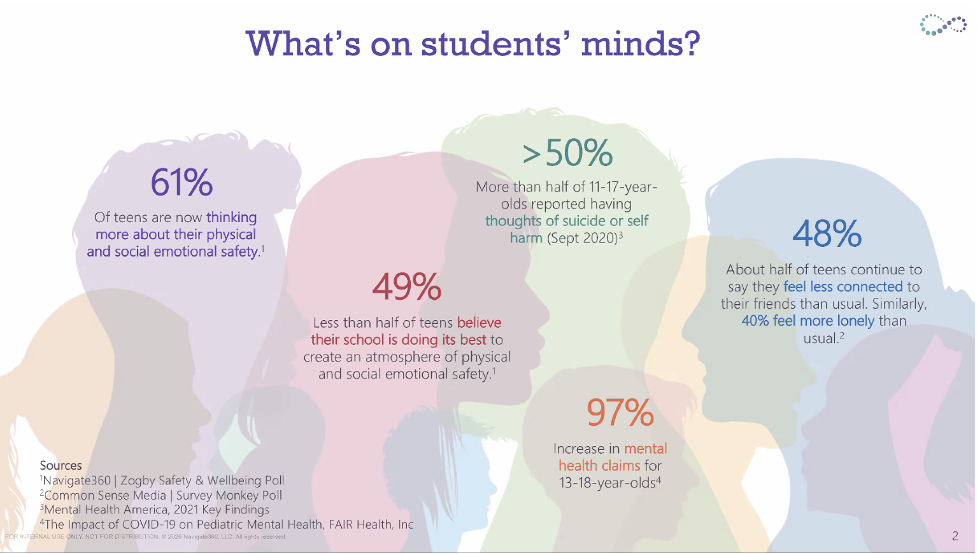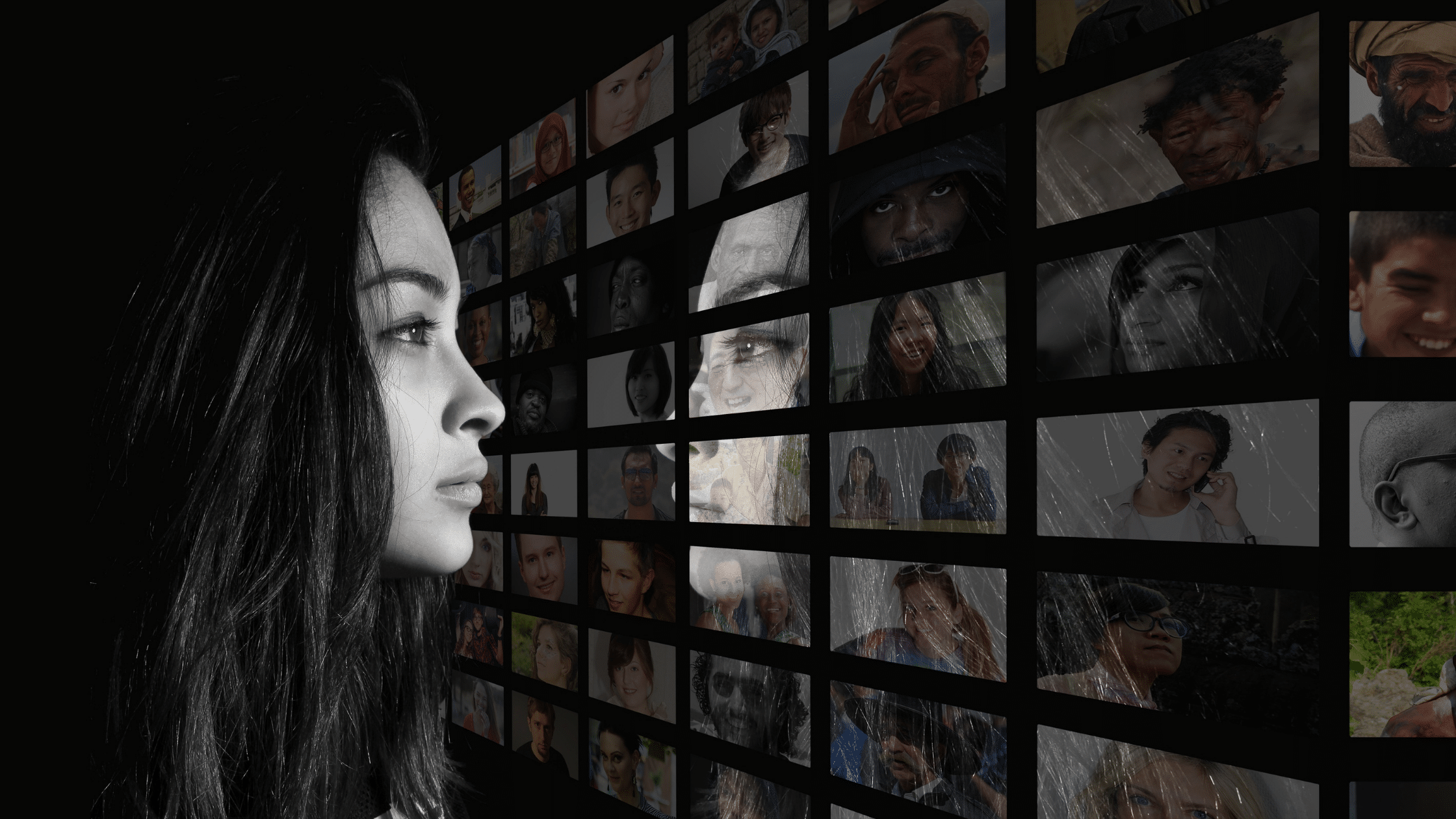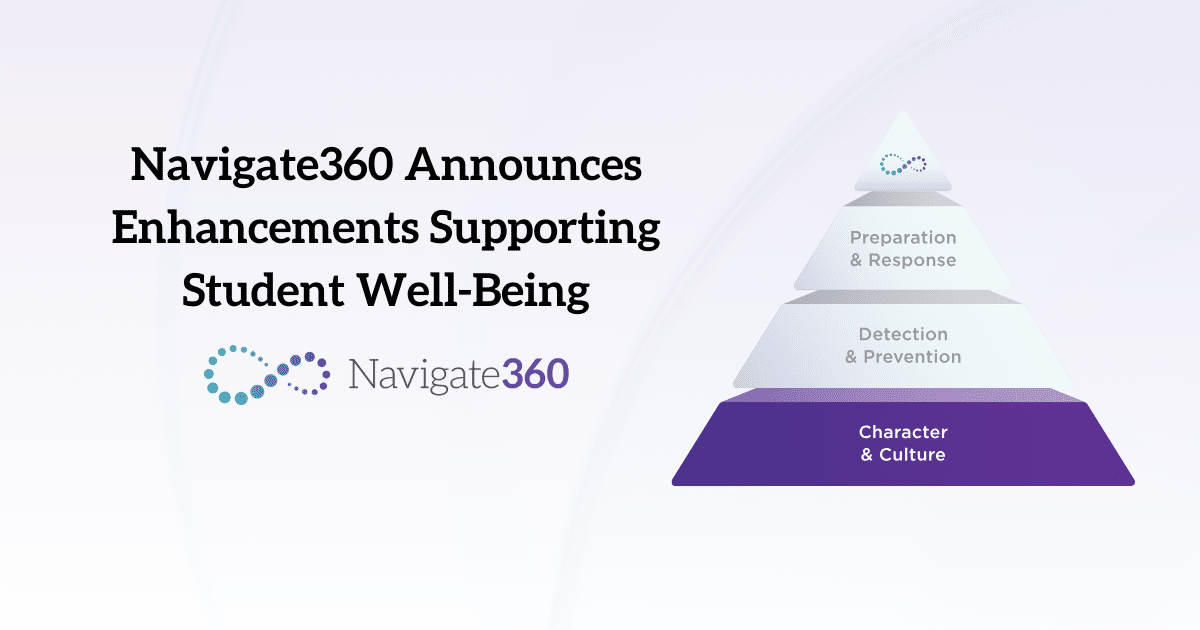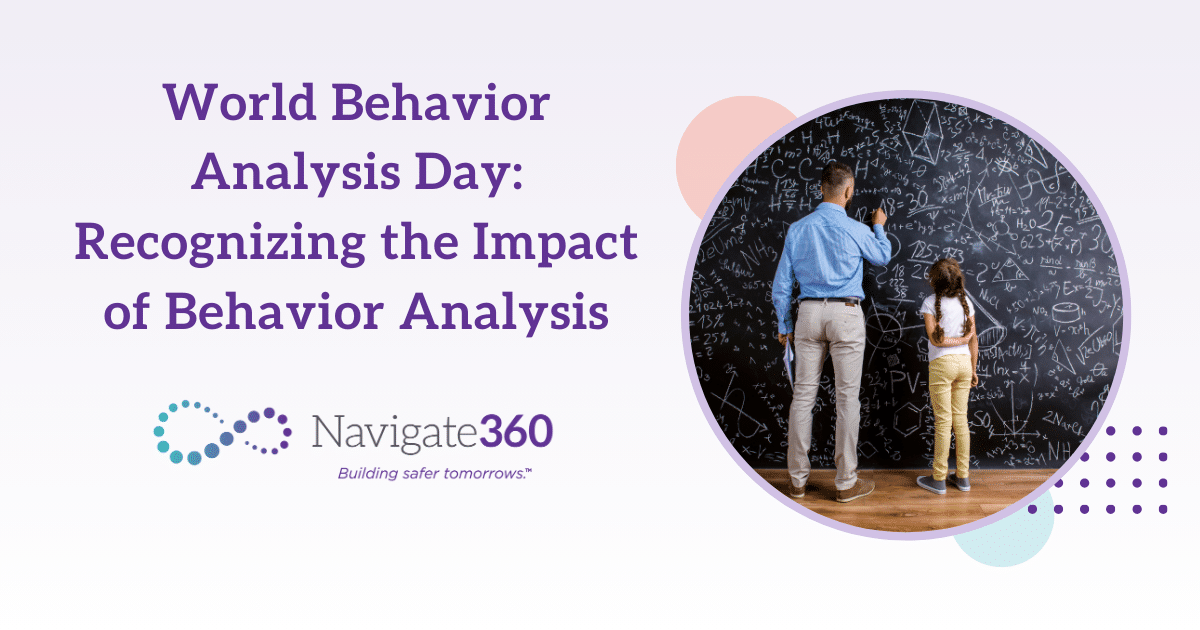JP Guilbault, Navigate360’s CEO, highlights the complexities & safety concerns of our evolving digital landscape and the impact on students.
As parents and school leaders, we all share a common goal – the positive social, emotional, intellectual, and physical development of our children.
We want to know our children are in a safe learning environment absent of bullying, intimidation, and harassment. It is equally important that they are protected from those who would seek to do them physical or mental harm.
With that being said, would you know if your child was showing signs of stress, anxiety, or was at-risk of self-harm? More importantly, who would know and how would your child get the help they may need?
As a father of five, these are questions I’ve experienced over the years. However, this year the questions feel more intense and front of mind than ever before.

The world our children inhabit is in many ways fundamentally different than the one we, their parents, grew up in. Their lives have a dimension that ours did not—an always-on, open-access, digital world.
Let’s face it, parenting and educating have never been easy. The wide-spread adoption of digital devices, social media, and media outlets offering 24-7 sound bites about controversial topics has never been more profound.
Consider some of these statistics from a recent Pew Research Study of parents with children under 11:
- 60% of children began engaging with a smartphone before the age of 5
- Over 1/3 of parents report their children interact with voice assistants
- 80% know their child watches YouTube several times a day
My point is not one against the rise and use of technology, in fact, I’m all for it. Anyone who has seen their child share knowledge gained through amazing immersive online learning experiences like YouTube, has seen the positive benefits technology can bring. During last year’s COVID lockdown, digitally enabled distance learning provided the ability for schools to continue in a way they just couldn’t otherwise.
As we learn, work and play in this ever-increasing digital world, our habits and tactics also change – some for the good, others for the bad. Unfortunately, the dangers and complexities in the digital landscape are real. It’s a place where young people suffer mentally from damaging bullying and harassment – where they are threatened and intimidated by peers and often exposed to inappropriate content, images and video.
In my day, you often could see the neighborhood bully. You knew his or her parents, as they were simply around the block. Kids were often playing, engaging outdoors and it was easier to spot withdrawal and isolation. In my era, we were an in-person social society, but today we are much more digital. Thoughts, feelings, threats, and conversations are taking place online much more than in the physical world – across social media, in G-Suite or elsewhere, and available to virtually all students at once.
There are students in every school silently struggling with suicidal ideation or significant mental health needs. What we have learned as a society in the wake of countless school tragedies is that— in most cases of school violence or suicides — there were people who knew what was planned and there were clues left behind (“leakage”) that weren’t found until it was too late. From active shooters at Columbine, Parkland, Sandy Hook, to the staggering number and far more prevalent teen suicides and acts of self-harm, we have many tools at our disposal to get in front of and prevent these tragedies. But we can only get in front of these tragedies if we adapt to where, and how, students are communicating and sharing these early signs of need.
As the rise of violence and self-harm continues, parents and school leaders are embracing technology, systematic processes, and education to advance school safety, school culture and to save lives.
- They are implementing tip lines and digital content scanning tools to provide leaders and parents the opportunity to intervene when a child is in harm’s way and needs help.
- They have enabled safety leaders to act on bomb threats, intervene when students bring guns to school or when students are being victimized by adults, and more.
- More recently, they have started to implement social emotional learning, mental health and invention courses, complimented by case management tools to ensure nothing slips through the cracks and students get the help they need – they are training their teams on the evidenced based Comprehensive Threat Assessment Guidelines (CSTAG) and the Columbia-Suicide Severity Rating Scale (C-SSRS) to identify and act on risks or concerning behavior.
The advancement of technology, education and implementation of systematic processes is helping school leaders see and act on what was rarely possible at scale. When we look closely, we see that:
- Over 50% of tips to anonymous tip lines had to do with suicide, suicidal ideation, or self-harm alone.
- Through digital and content scanning of more than 2,000,000,000 syntax-based permutations of harm-related language and syntax, we can act on mental health-related statements occurring every 15 minutes and self-harm and suicide once every hour.
- Tens of thousands of training and professional development hours are taking place in schools to help identify warning signs that four of every five students who attempt suicide gave before ending their life.
- Multi-disciplinary school assessment teams logged into case management solutions nearly 240,000 times last school year as they worked 200+ threat and harm-related cases per month.
- 1,300,000 students have access to on-demand social-emotional learning and mental health courses.
I often wonder, what would happen if we as parents, and our schools didn’t use these tools? If we weren’t seeing the leakage or connecting the dots? We know the result – an increasing rise in youth suicides, mental health problems, and violence in schools beyond the already too-high levels.
It’s unlikely we can stop every tragic event from happening. However, we as parents, teachers, students, and individuals have access to the tools and technologies to learn, share and act on information about safety, self-harm, or violence before it becomes tragic. I find some comfort knowing this and that we are doing everything we can, one life at a time.
Thankfully, as parents and school leaders, we are working hard to make a difference. As a parent, to my school leaders, I sincerely thank you.




